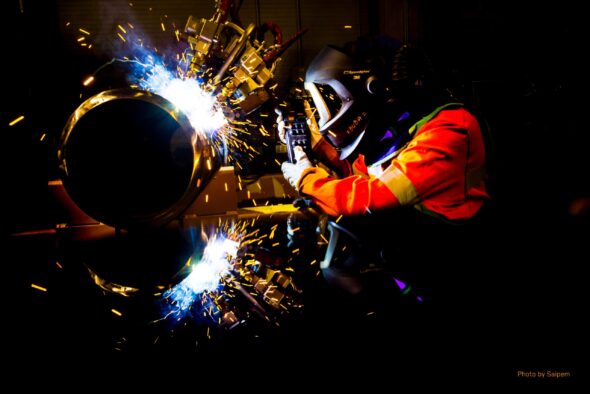What goes on in Poland on the 28th of June.
Gaz-System started laying Baltic Pipe in the Baltic Sea
On 27 June, Castorone, one of the vessels responsible for constructing the offshore gas pipeline between Poland and Denmark, started laying the Baltic Pipe in the Baltic Sea. The pipelay started near the halfway point of the entire offshore gas pipeline route, in Danish waters, close to the island of Bornholm. Castorone will be successively moving north-west along the route. „Baltic Pipe is an investment implemented step by step and in line with the schedule. Weather and other circumstances we cannot impact may change, but we do not slow down, and we do our job. Today, Gaz-System starts laying the offshore pipeline section, so that the whole project can be completed and handed over for operation in its full capacity in 2022. Baltic Pipe will then be one of the main components to guarantee Poland’s energy security,” Piotr Naimski, the Government Plenipotentiary for Strategic Energy Infrastructure said.
„Gaz-System has reached another important milestone in Baltic Pipe implementation. After 5 years of planning, designing, and selecting contractors, laying of the first offshore gas pipeline in the history of the Polish gas industry has just started. By the end of this year, we are planning to weld and lay on the Baltic seabed 275 kilometers of the pipeline, which will connect the coasts of Poland and Denmark. Castorone, one of the largest special-purpose vessels of its kind will perform the pipelay operations in the deepest waters,” Tomasz Stępień, President of Gaz-System said.
The Baltic Pipe offshore gas pipeline will be laid by three installation vessels: Castorone, Castoro Sei and Castoro 10. Castorone is the largest ship engaged in the offshore gas pipeline construction in the Baltic Sea. It uses the Dynamic Positioning System, thanks to which it can be maneuvered very precisely. It is over 300-metres long, nearly 40-metres wide, and can board as many as 700 people. It also has a helipad and several stations for welding individual pipe sections and joining them into the final pipeline. The welded pipeline will be lowered into the sea using a special ramp at the stern of the vessel. It consists of three parts which, by adjusting the slope, allow the pipeline to be installed at different depths. Two more ships, Castoro Sei and Castoro 10, are currently stationed in Rotterdam, ready to join the Baltic Pipe laying operations. Apart from Castorone, other vessels engaged in subsea works under the Baltic Pipe project are working in the Baltic Sea now. Some of the operations they are involved in are pipe deliveries, surveys, dredging, rock placement, and preparation of crossings with the existing third-party infrastructure on the pipeline route. Laying the almost 275-km long offshore pipeline will take a few months. If weather allows, the entire process will be completed this year already.
GE Power will build a gas block in Ostrołęka
CCGT Ostrołęka, i.e. the Energa special purpose vehicle from the Orlen Group, signed with the General Contractor for the construction of the power plant – GE Power an annex to the existing contract, which provides for the change in technology from coal to gas and steam. The value of the annex for the construction of a gas-fired power plant is estimated at approx. PLN 2.5 billion and will be half that of the contract for the construction of a coal-fired power plant.
„There is no turning back from building a gas power plant in Ostrołęka. The decision was made. This investment will significantly support Poland’s energy transformation. In the ORLEN2030 strategy, we assume not only an increase in the capacity of renewable energy sources to over 2.5 GW, but also the achievement of 2 GW of capacity in gas-fired power plants. This will allow to create a strong energy division within the company that will also be balanced. It will also be a significant step towards strengthening conventional energy in Poland with gradual replacement of coal units with low-emission sources. This change in electricity generation technology is in line with global trends that prefer environmentally friendly solutions. In the United States alone, over 100 power plants have switched from coal to gas over the past decade. Importantly, this investment will be profitable in terms of business and will contribute to stabilizing electricity prices on the domestic market,” Daniel Obajtek, president of PKN Orlen, said.









